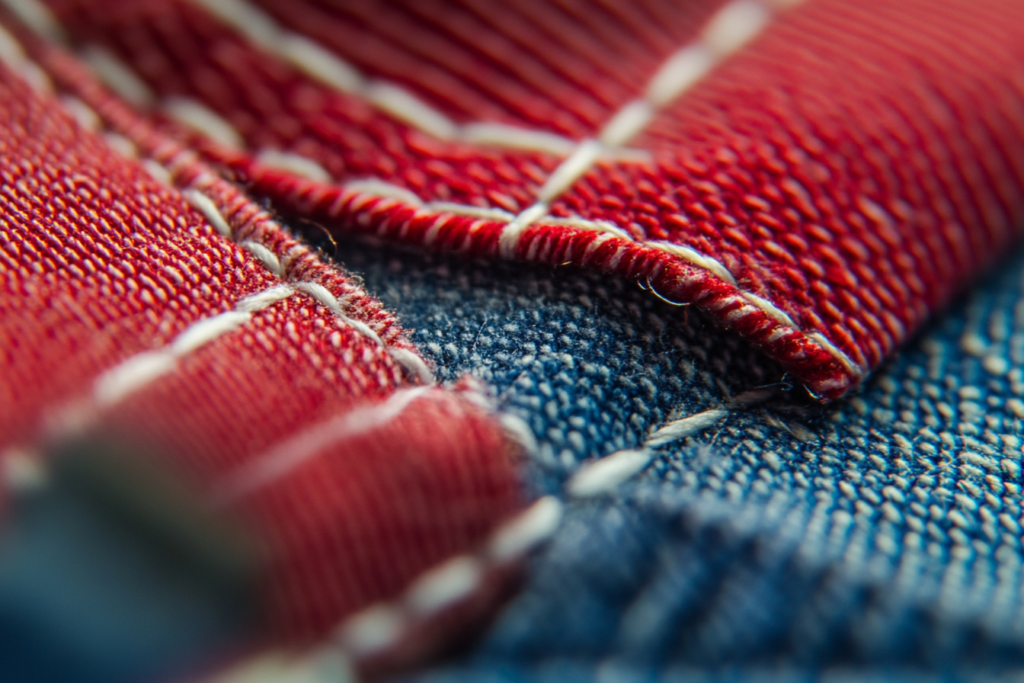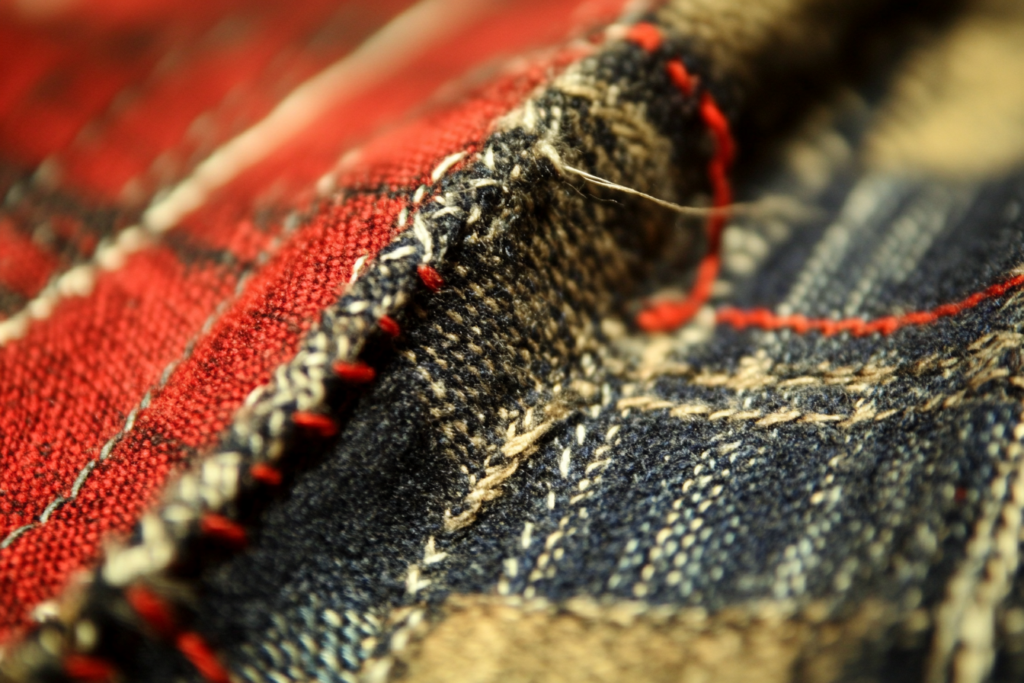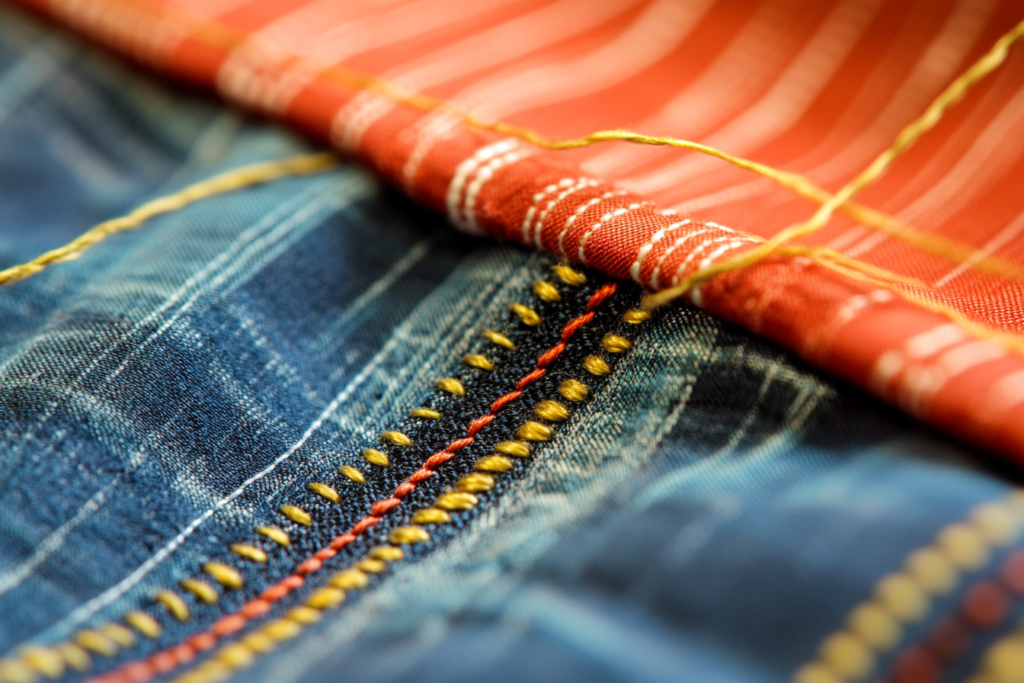Seam: The Essential Element of Garment Construction
Meta Description: A seam is a fundamental sewing technique used to join fabric pieces together with thread. Learn about different types of seams, their functions, and how they enhance garment durability and fit.
What is a Seam?
A seam is the line where two or more pieces of fabric are joined together using thread. It is an essential aspect of garment construction, creating the structure, fit, and durability of clothing. A seam can be simple, decorative, or reinforced depending on the garment’s purpose and fabric type.
Seams also play a functional role by shaping garments, adding strength to high-stress areas, and ensuring a clean finish. Some seams even serve as design elements, such as topstitched seams on denim jeans or flat-felled seams in workwear.


Key Features of a Seam
✔ Joins Fabric Pieces Together – Seams hold fabric panels in place, ensuring the garment maintains its shape.
✔ Essential for Fit and Structure – Seams determine the final silhouette of a garment.
✔ Can Be Decorative or Functional – Some seams serve aesthetic purposes, while others are reinforced for durability.
✔ Various Seam Types Exist – Seams can be plain, reinforced, decorative, or stretchable, depending on fabric and garment needs.
✔ Different Seam Finishes Enhance Longevity – Techniques like serging, French seams, and overlocking prevent fraying and extend the garment’s lifespan.
Types of Seams and Their Uses
Seams can vary based on their purpose, fabric type, and finishing method. Below are some of the most commonly used seams:
| Seam Type | Description | Common Uses |
|---|---|---|
| Plain Seam | The most basic seam, where two fabric edges are sewn together with a straight stitch. | Shirts, dresses, pants. |
| French Seam | A clean, enclosed seam where raw edges are hidden inside the fabric layers. | Delicate fabrics like silk, chiffon. |
| Flat-Felled Seam | A reinforced seam with double stitching for durability and strength. | Denim jeans, uniforms, workwear. |
| Overlocked Seam | Uses a serger to finish raw edges and prevent fraying. | Knitwear, stretch fabrics. |
| Lapped Seam | One fabric piece is laid over another and stitched down for extra strength. | Leather garments, heavy fabrics. |
| Topstitched Seam | A decorative seam where an extra line of stitching is visible for detail and reinforcement. | Denim jackets, bags, coats. |
| Double-Stitched Seam | Two parallel rows of stitching to provide extra durability. | Athletic wear, stretch fabrics. |
Why Are Seams Important in Garment Construction?
1. Provides Structure and Shape
- The placement and type of seams determine how a garment fits and drapes on the body.
2. Enhances Durability
- Reinforced seams, like flat-felled or double-stitched seams, provide extra strength to garments that undergo frequent movement or stress.
3. Prevents Fabric Fraying
- Proper seam finishes help prevent fabric edges from unraveling, ensuring that the garment lasts longer.
4. Allows for Fit Adjustments
- Seams can be taken in or let out to adjust the garment’s size without reconstructing the entire piece.
5. Adds Decorative Elements
- Some seams are not just functional but also serve as a design feature, such as topstitched seams on denim or decorative seams on couture garments.
Seam vs. Seam Allowance vs. Seam Line
| Term | Definition |
|---|---|
| Seam | The line where two fabric pieces are joined together using thread. |
| Seam Allowance | The extra fabric left between the seam line and the edge of the fabric for adjustments and durability. |
| Seam Line | The actual stitching line where the seam is sewn, usually within the seam allowance. |
Understanding these distinctions helps sewists and designers construct garments with precision and durability.
Seam Finishing Techniques
Once a seam is sewn, finishing the edges is necessary to prevent fraying and enhance the garment’s durability. Common seam finishing techniques include:
- Serging (Overlock Stitch)
- Uses a serger (overlock machine) to trim and bind the fabric edges in one step, preventing fraying.
- Pinked Edges
- Uses pinking shears to cut fabric edges in a zigzag pattern, reducing fraying.
- Bias Bound Seams
- Covers raw edges with bias tape for a polished, couture-quality finish.
- Turned & Stitched Seam
- The seam allowance is folded under and stitched down to prevent raw edges from unraveling.
- Flat-Felled Seams
- Strong, enclosed seams commonly used in denim and heavy fabrics, offering extra reinforcement.
How to Sew a Basic Seam: Step-by-Step Guide
1️⃣ Align Fabric Pieces
- Place two fabric pieces right sides together, matching the seam edges.
2️⃣ Pin or Clip Fabric
- Secure the fabric with pins or clips to prevent shifting while sewing.
3️⃣ Set Your Seam Allowance
- Use a seam guide or presser foot to maintain the correct seam allowance (e.g., ⅝” for standard garments).
4️⃣ Sew the Seam
- Stitch along the seam line with a straight stitch, ensuring even tension.
5️⃣ Press the Seam
- Use an iron to press the seam open or to one side for a smooth, professional finish.
6️⃣ Finish the Raw Edges
- Apply a serger, pinking shears, or bias binding to prevent fraying.
Common Seam Issues & How to Fix Them
| Issue | Cause | Solution |
|---|---|---|
| Seam Grin | Stitching too loose, weak tension. | Adjust stitch tension, use a stronger thread. |
| Puckering | Fabric pulled too tightly during sewing. | Use the correct needle, loosen tension. |
| Uneven Seam Allowance | Inconsistent sewing technique. | Use a seam guide or marked sewing lines. |
| Frayed Edges | Raw edges left unfinished. | Finish seams with serging, pinking, or binding. |
Conclusion: The Role of Seams in Perfecting Garments
A seam is one of the most fundamental components of garment construction. It provides structure, durability, and design elements that enhance the fit and longevity of clothing. By mastering different seam types and finishes, you can create professionally crafted garments that not only look great but also last longer.
Whether you are sewing basic apparel, formalwear, or industrial clothing, understanding seam construction will help you create polished, high-quality pieces.



